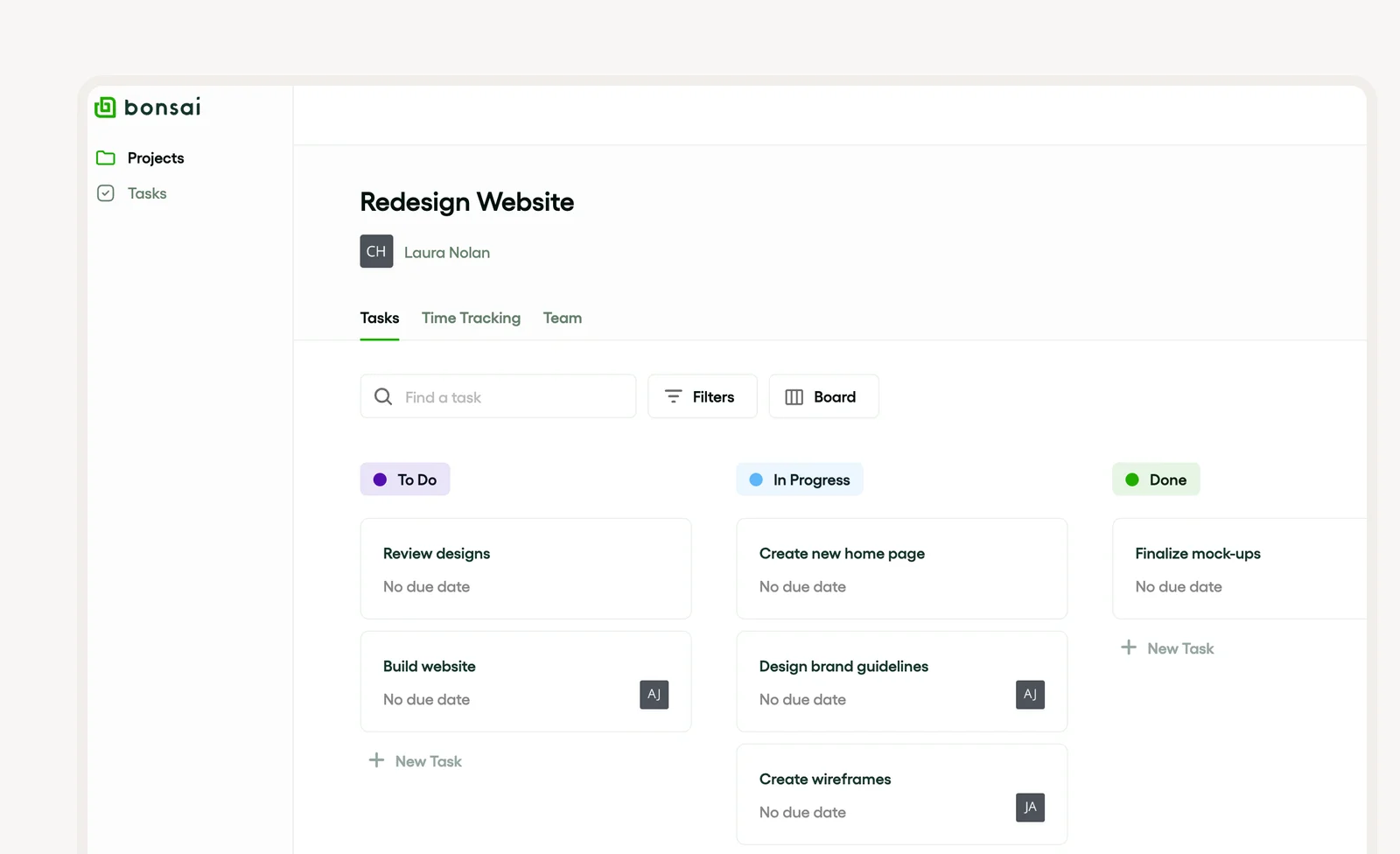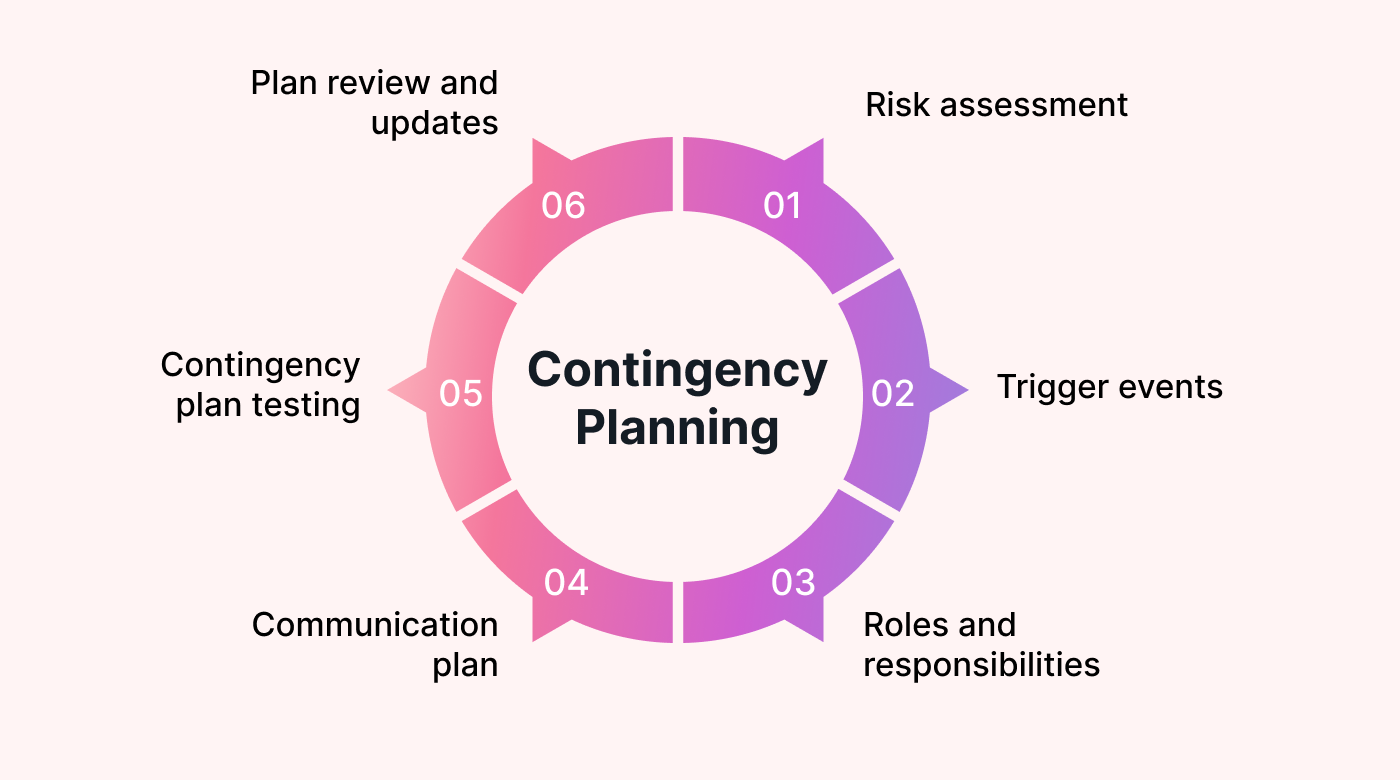Crafting a contingency plan is pivotal in risk management and business continuity. It’s your 'Plan B,' ensuring smooth operations when disasters hit. Start by pinpointing potential threats, running risk assessments, and shaping responses to safeguard data and business readiness.
Crucial elements in contingency planning include:
- Emergency planning: Formulates immediate responses to critical incidents.
- Disaster recovery: Focuses on data backup and recovery post-incident.
- Business continuity plans: Secures long-term operational stability post-crisis.
Introduction to contingency planning
Contingency planning keeps your business ready for any curveballs. It spans emergency planning, disaster recovery, and risk management, ensuring smooth operations despite interruptions. Businesses craft these plans from thorough risk assessments, detailing data backup and recovery steps. These 'Plan B's' are essential in crisis management, ensuring a swift, effective response.

Definition of a contingency plan
A contingency plan, or 'Plan B,' ensures business continuity during emergencies. It’s crucial for risk management. This approach includes disaster recovery protocols and business-readiness plans, focusing on crisis and incident response, using risk assessments and data backup procedures as primary tools.
Importance of contingency planning
Contingency planning is vital for risk management and business continuity. It prepares organizations for incidents, ensuring operational continuity and an effective emergency response. This involves crafting business-readiness plans, disaster recovery, and data backup procedures, ensuring resilience during crises, reducing downtime, and preventing financial losses.
Bonsai offers key tools for creating & managing contingency plans
Bonsai is an essential tool for anyone aiming to create and manage contingency plans effectively. Its user-friendly interface makes it easy to use, even for those who may not be very tech-savvy. One of the key features of Bonsai is its capability to help you pinpoint potential risks and devise strategies to address them. This proactive approach ensures that you're always prepared to face any unexpected challenges that arise.
Collaboration plays a crucial role in contingency planning, and Bonsai shines in this aspect. The platform enables team members to collaborate effortlessly, sharing updates and making real-time adjustments. This keeps everyone aligned and allows for quick responses to any changes. The option to assign tasks and set deadlines also helps maintain organization and focus within the team.
- Bonsai simplifies task creation, assignment, and tracking. You can set deadlines, prioritize tasks, and monitor progress using a Kanban board or list view.
- Integrated time tracking records hours spent on tasks, aiding in accurate billing and better time management.
- Set project budgets and monitor expenses. Generate detailed reports to oversee spending and avoid unforeseen costs.
- Evaluate team availability and workload capacity. Assign tasks based on schedules to optimize resource utilization and prevent overburdening.

Another major benefit of Bonsai is its automation features. These tools can significantly reduce the time spent on repetitive tasks, freeing you up to concentrate on more critical elements of your contingency planning. For instance, you can automate the monitoring of key metrics and receive alerts when specific thresholds are reached. This way, you stay informed without the need to constantly check on your plans' status.
Bonsai also includes strong reporting capabilities, giving you detailed insights into how effective your contingency plans are. You can easily create reports that showcase successes and pinpoint areas for improvement. This data-driven approach ensures that your plans are not only well-structured but also continuously refined for optimal performance.

In conclusion, Bonsai offers a comprehensive set of tools that simplify the creation and management of contingency plans. Its user-friendly design, collaborative features, automation options, and strong reporting capabilities all contribute to a more efficient and effective planning process. With Bonsai, you can be confident that you're well-equipped for any eventuality.
Key elements of a contingency plans
Contingency planning is key to risk management, ensuring business continuity during unforeseen events. Essential components include a solid 'Plan B,' disaster recovery strategies, and data backup procedures. Effective emergency response and crisis management strategies, like detailed emergency planning and incident response protocols, are crucial.
Identifying potential risks
Risk management involves spotting challenges that might disrupt operations, from tech failures to natural disasters. Through contingency planning, these hazards are anticipated, and emergency planning is set up. This includes a robust 'Plan B,' data backup procedures, and regular risk assessments to enhance business continuity and emergency responses, securing operational stability.
Assessing impact and prioritizing risks
Effective risk management, with thorough risk assessments, is crucial for smooth operations and mitigating disruptions. This includes setting up data backup procedures, robust business-readiness plans, and a reliable 'Plan B.' Emergency planning and disaster recovery protocols are essential, guiding the organization’s incident response and ensuring continuous business stability.
Developing response strategies
Developing strong response strategies ensures business continuity. This involves risk management, contingency planning, and disaster recovery. Businesses must conduct comprehensive risk assessments to identify threats and develop measures to mitigate risks. Key components include building business-readiness plans, clear incident response procedures, and thorough backup plans to maintain operations during crises.
Establishing a communication plan
Creating a strategic communication plan is vital for risk management, business continuity, and disaster recovery. Set up a functional system for smooth message relay during crises. Risk assessments help formulate 'Plan B,' incident response plans, and emergency planning. Extend plans to business-readiness, aligning with data backup procedures for effective contingency planning and continuous operations.
Steps to develop a contingency plan
Contingency planning starts with a risk assessment to spot potential crises. Develop a comprehensive 'Plan B,' including incident response and business-readiness plans. Key components include emergency response, disaster recovery strategies, data backup procedures, and continuity measures. Continuous risk management keeps the plan effective and up-to-date.

Conducting a business impact analysis
A Business Impact Analysis (BIA) is crucial for risk management, integrated into business continuity plans. It assesses potential effects of disruptions, essential for contingency planning. Focus areas:
- Emergency planning: Strategies for immediate employee safety.
- Disaster recovery: Formulating backup plans, including data procedures.
- Incident response: Risk assessments for quick reaction strategies. A BIA ensures operational continuity and robust emergency responses during crises.
Designing contingency strategies
Contingency planning involves creating a business continuity plan for operations during incidents like natural disasters. Start with a risk assessment to identify potential emergencies. Key elements include emergency response, incident management procedures, data backup strategies, and a 'Plan B' if the initial approach fails. Consider risk management, crisis management, and business-readiness plans, offering a comprehensive approach to business continuity and disaster recovery, crucial for company resilience.
Creating a contingency plan document
Drafting a solid contingency plan involves risk management, business continuity, and disaster recovery. This document maps out incident responses to ensure smooth business operations during interruptions. Start by:
- Conducting risk assessments to spot potential threats.
- Establishing data backup and recovery procedures as crucial components of the backup plan.
- Crafting continuity of operations and emergency response strategies within your business-readiness plans.
Testing and updating the plan
Testing and updating your business continuity plans regularly is crucial. It’s a fundamental part of risk management, ensuring your business-readiness strategy stays sharp and responsive to new risk assessments. Regular activities include:
- Emergency planning
- Data backup and recovery procedures
- Contingency planning
Always maintain a robust Plan B to ensure operations continue smoothly during a crisis and to enhance incident response efficiency during disaster recovery. Remember, business continuity is ongoing; routine testing and updating are key to effective crisis management.
Role of technology in contingency planning
Tech is vital in contingency planning, bolstering risk management, business readiness, and operational continuity. Advanced tools and software can automate data backup and recovery, safeguarding critical info during crises. They also support thorough risk assessments, crucial for emergency and business continuity plans.
In incident response and disaster recovery, tech ensures efficient communication and planning. During emergencies, it coordinates rapid responses. In business disruptions, a tech-backed Plan B can prevent severe losses.
Advantages of Bonsai for contingency planning
Bonsai is a true lifesaver for contingency planning! Its user-friendly design makes it easy to spot potential risks and develop strategies to address them. The collaboration features really stand out, ensuring that everyone on your team is aligned and can quickly adjust to any changes.
With real-time updates, you’re always informed, which reduces stress and boosts your confidence in your plans.

Additionally, Bonsai’s automation tools save you a lot of time, allowing you to concentrate on what truly matters. It’s like having a reliable partner that helps you navigate uncertainties effortlessly, ensuring you’re always ready for whatever comes your way.
Using Microsoft Project for contingency planning
Microsoft Project is a powerhouse for contingency planning. It supports risk management and business readiness by simulating scenarios and shaping response strategies. This enhances disaster recovery and business continuity, ensuring organized incident responses in crises. Key features include:
- Data backup and recovery procedures
- Emergency response planning
- Risk assessments
These make it essential for emergency planning and developing a robust Plan B. Microsoft Project boosts your crisis management capabilities significantly.
Benefits of Smartsheet in risk management
Smartsheet excels in risk management, aiding in the creation of business continuity plans and ensuring operational continuity. It facilitates dynamic planning and real-time communication, enhancing both contingency and emergency planning. By streamlining workflows and improving visibility, it enables quick incident responses and supports crisis management.
Additionally, Smartsheet offers robust features for data backup, recovery procedures, and risk assessments. Whether you need immediate info during disaster recovery or are crafting a comprehensive backup plan, Smartsheet organizes and accesses essential data effectively, making your business-readiness plans more reliable and consistent.
Contingency planning for agencies
Contingency planning is crucial for agencies aiming for uninterrupted business continuity, especially during crises. This process involves setting up detailed action plans and protocols to tackle potential threats, disasters, and disruptions. Agencies are expected to cover every base, from risk management strategies to disaster recovery tactics.

This typically involves crafting precise business-readiness plans, conducting frequent risk assessments, and implementing strong data backup and recovery systems. Agencies need to constantly refine their 'Plan B' to adapt to evolving conditions, thus enhancing their operational continuity and boosting overall incident response capabilities.
Specific considerations for agencies
Agencies should emphasize risk management, gaining a deep understanding of potential issues and conducting comprehensive risk assessments. This should include robust business-readiness plans to maintain operations and continuity during emergencies.
Focus is also needed on contingency planning, developing effective backup plans, and emergency planning crucial for managing crises. Additionally, integrating solid data backup and recovery procedures is essential for a strong disaster recovery strategy.
The significance of having a 'Plan B' is critical—it should outline clear incident response and emergency procedures to quickly address and resolve any arising crises or issues.
Case examples of agency contingency plans
- USAID: This federal agency undertakes rigorous contingency planning to maintain business continuity during crises. Their strategy includes detailed risk assessments, forming an incident response team, and developing business-readiness plans.
- NOAA: Maintains comprehensive contingency plans to ensure operational continuity, deploying elaborate emergency response strategies during environmental disasters, which include proactive risk management and emergency planning.
- FBI: Features a detailed disaster recovery plan focusing on data backup and recovery procedures. In critical incidents, their strategic Plan B activates to protect vital information and systems.
Conclusion: The value of being prepared
In the business realm, preparedness is key. Integrating concepts like risk management, emergency planning, and business continuity planning into operational strategies can significantly reduce potential risks.
Moreover, business-readiness plans, contingency strategies, and data backup and recovery procedures guarantee operational continuity, even under adverse conditions. A well-thought-out Plan B, paired with prompt incident response and disaster recovery actions, showcases effective crisis management, underscoring the importance of being well-prepared.
Regular risk assessments are vital to inform necessary adjustments to the backup plan, emphasizing the importance of structured, organized readiness for achieving business success.






